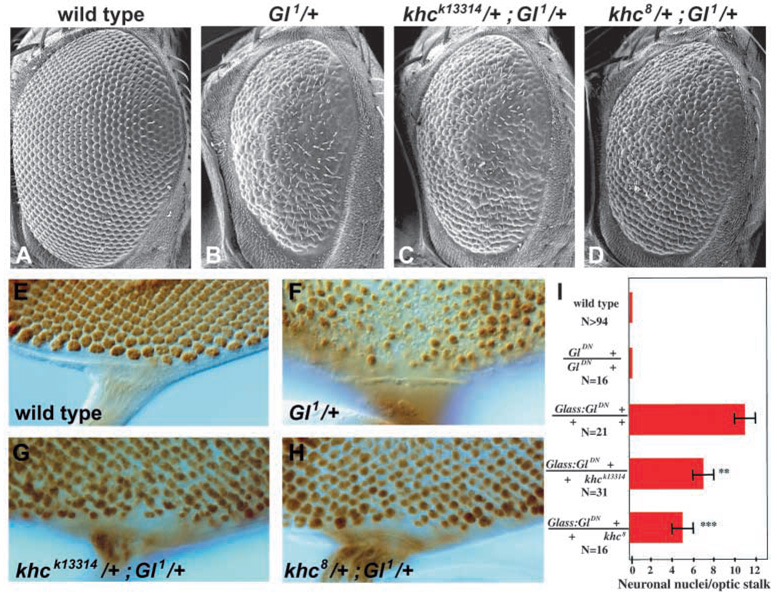Fig. 6.
Glued nuclear mispositioning is suppressed by kinesin heavy chain reduction. Scanning electron micrographs of adult eyes (A–D). (A) Wild type. (B) Gl1/+ animals have smaller eyes with disorganized ommatidia. (C,D) Reduction of kinesin heavy chain gene dosage partially suppresses Gl1/+ eye defect. Apical regions of third instar eye discs in which photoreceptor nuclei are stained with anti-Elav (E–H). (I) Suppression of the Glass-GluedDN phenotype quantified by counting the number of Elav-positive nuclei in the optic stalks of animals with 15 to 22 rows of photoreceptor development. The average for each genotype was 19 rows of development. Error bars are s.e.m. and asterisks denote P-value of unpaired t-test (**P<0.01, ***P<0.001).

